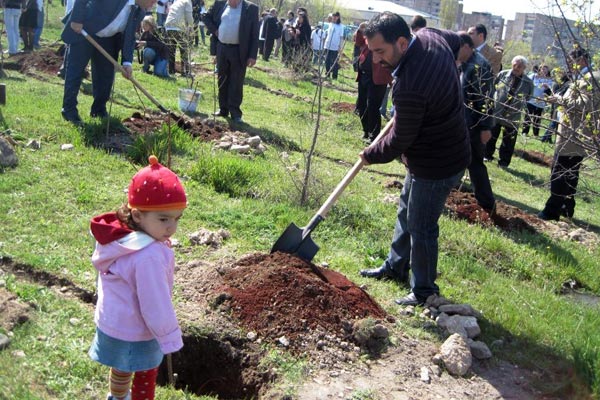Eco alarm: Armenian endangered wildlife is again under threat of hunt

Bezoar goats are among endangered species By Siranuysh Gevorgyan
ArmeniaNow reporter
Published: 25 September, 2009 An Armenian environmental organization is trying to stop the hunting of animals in Armenia that are registered in the Red Book of endangered species.
Ecolur Non Governmental Organization says that Ibex, a Russia-based hunting club, is organizing hunts in the Urtsasar mountains in which hunters pay to track and kill bezoar goats (3,500 euro), Armenian mouflon (4,000 euros) and Caucasian bear (450 euros).
“The hunt of Armenian mouflon is organized in the mountains of Meghri (near the Iranian border). The whole hunting tour is held on 2,000-2,500 meters above sea level. Usually 3-5 days are enough for a successful hunting. The season of hunting is the whole year; the best period is March-November,” says the Ibex website. (http://club-ibex.com/rus/tourdetail.php?t_id=570)
These animals are registered in the Red Book, and only the Armenian Government can give permission for their hunting, and moreover, only in rare case, for example, for scientific research purposes. Besides, Armenia has no year-round season, but allows hunting only August-February.
Igor Khorozyan, project coordinator of WWF (World Wildlife Fund) Armenian office, says that bezoar goats and mouflons live mainly in the southern part of Armenian. He could not say for sure how many such animals used to be in Armenia, because there was no research in this respect. Now, according to Khorozyan there are about 200-250 Armenian mouflons and about 2,000 bezoar goats in Armenia.
The number of those animals essentially decreased in 1990s, when people were unsparingly hunting them. Now, however, poachers face a fine of 3,000,000 drams (about $7,900).
“The hunting of those animals cannot be legal, as far as both species are registered in the world and Armenian Red Books. And the hunting of endangered animals is simply not allowed,” Khorozyan says.
Oleg Podtyazhkin, head of Ibex, insists that the hunting of those two species of animals is considered to be legal in Armenia.
An ArmeniaNow reporter introduced herself as someone who wants to order a bezoar goat hunting. She asked Podtyazhkin (who, besides a phone number, also left the username of his Skype in the Ibex website) about it via Skype.
Podtyazhkin assured his potential client that the hunting of those animals is legal.
“We offer only legal hunting. It is possible to hunt Armenian mouflon and bezoar goat in Armenia,” he said.
Artsrun Pepanyan, press-secretary of the Ministry of Ecology of Armenia says that the State Inspectorate of the Ministry is planning to send a letter to Ibex informing the organization that the hunting of the above mentioned animals is banned in Armenia.
“They would better first of all get acquainted with the laws of Armenia, and only then to offer hunting tours,” Pepanyan says.
Even though hunting of those animals is banned in Armenia, there have been several reported incidents of Armenian oligarchs and high tanking officials taking hunting trips that include tracking and shooting animals registered in the Red Book.
Information about Armenian mouflon hunt was spread last year, too (http://www.ecolur.org/hy/news/2008-11-21/127/). As mass media informed, the hunting was organized by ‘Safari International’ Organization, the head of which is Marzpet (governor) of Vayots Dzor Province Vardges Matevosyan. According to the decision of the Armenian Government in 2004, the territories of wood funds of Yeghegis (Vayots Dzor Province) and Geghi and Darmanadzor (Syunik Province) were given to ‘Safari International’ Ltd., aiming to implement the development program of wildlife species natural reproduction, as well as ecotourism and hunting tourism.
Soon after that information was spread, Matevosyan told different mass media representatives that no hunting is done in that territory, however in the website of the organization headed by him, currently it is possible to find announcement about Besoar goats and Mouflons hunting, and their prices. (http://www.safariinternational.com/en/p_Muflon-and-ibex-in-Armenia.htm).
















